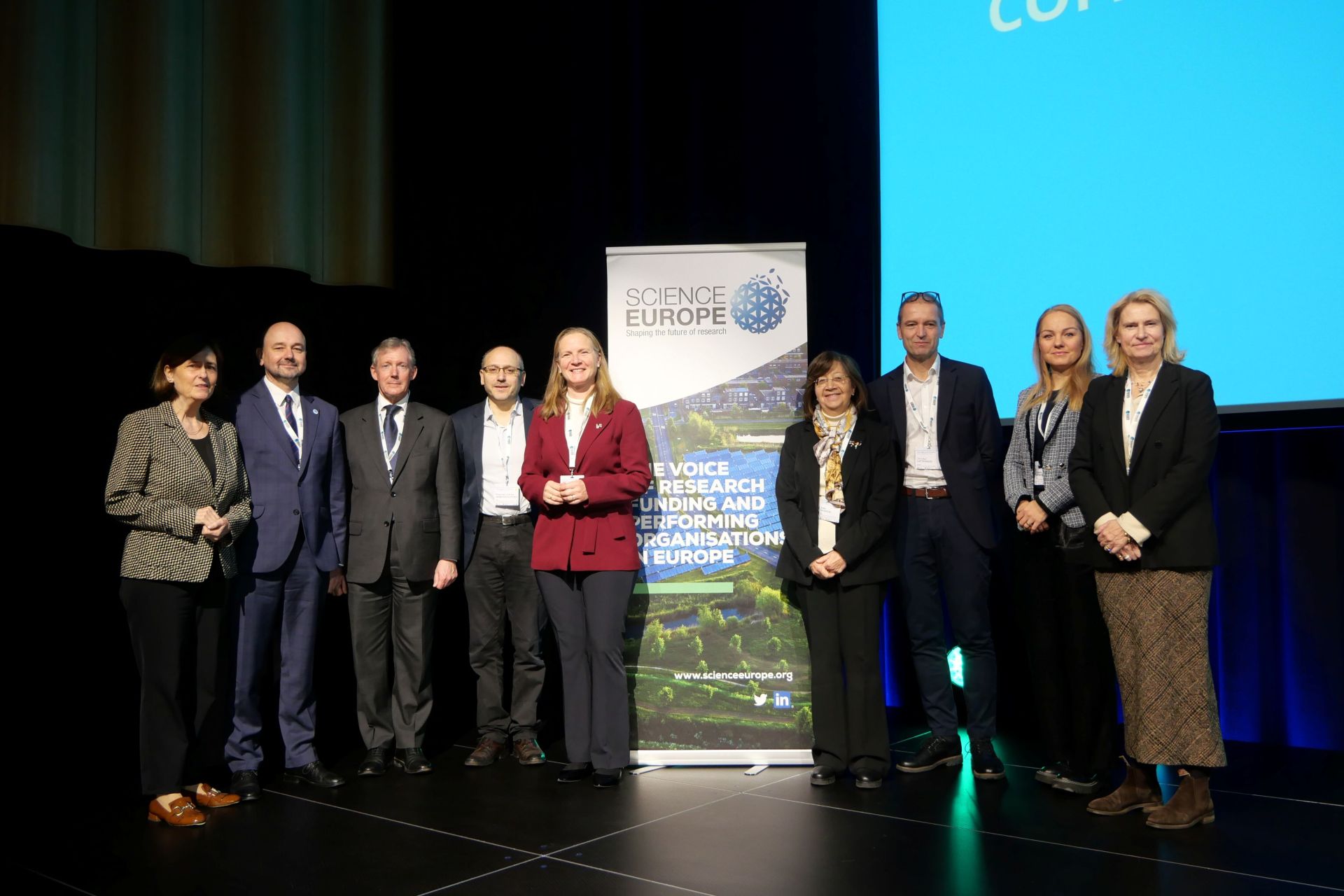Happy Holidays!
Happy Holidays and best wishes for a wonderful New Year!
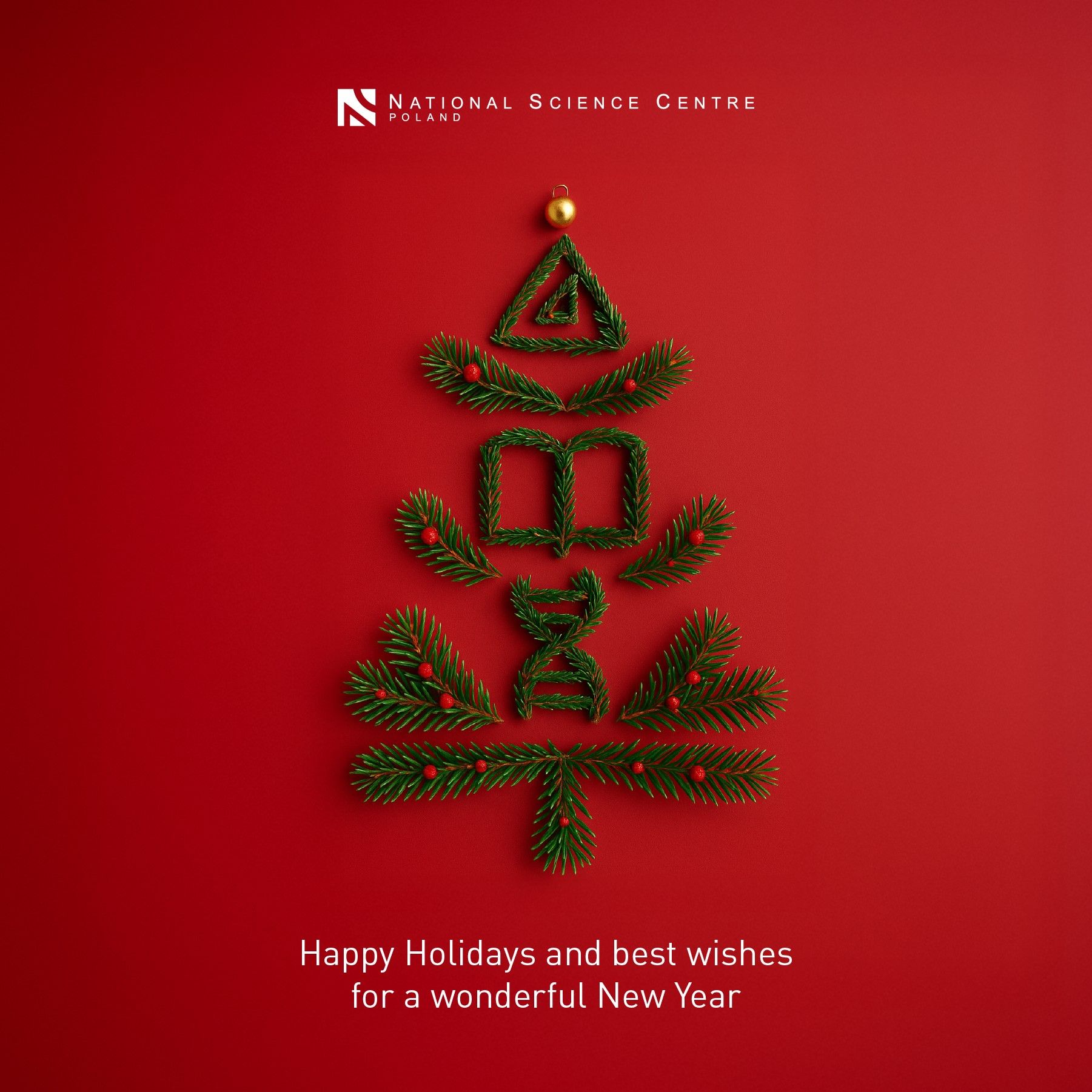
Happy Holidays and best wishes for a wonderful New Year!

The first transnational Dioscuri Symposium in Krakow showcased the achievements of the Dioscuri Centres of Scientific Excellence to date, and sparked discussions on the responsibility of science towards society, as well as science communication. The fifth Dioscuri call will be launched in the first half of 2026.
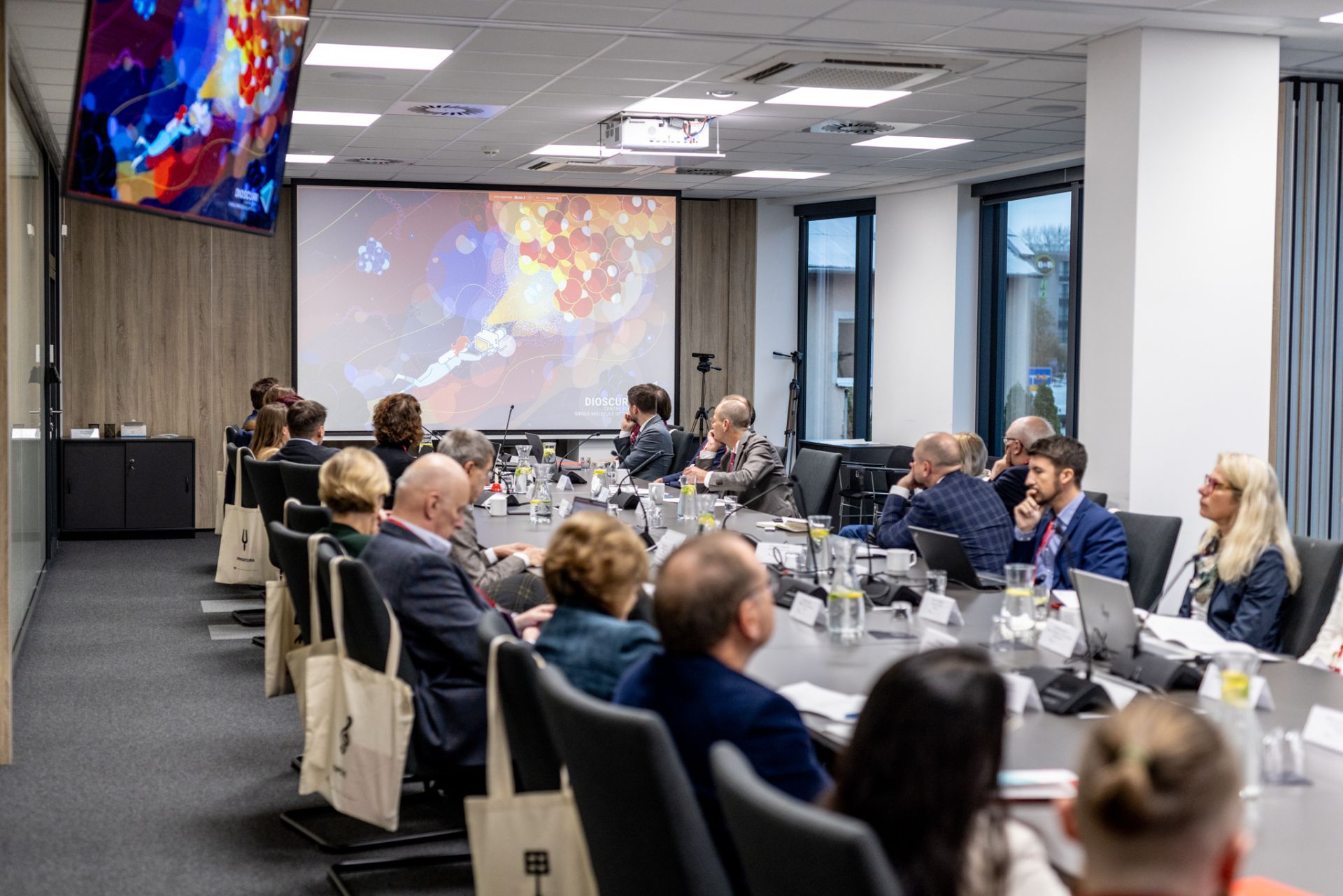 Dioscuri Symposium
The first transnational Dioscuri Symposium took place at the National Science Centre in Kraków on 3–4 November 2025, bringing together around one table the leaders of the Dioscuri Centres of Scientific Excellence from Poland and the Czech Republic, members of their research teams, administrative coordinators of the Dioscuri Centres, research partners from Germany and representatives of the Scientific Advisory Boards. The discussions were also attended by members of the Dioscuri Committee, chaired by Prof. Joachim Sauer with Vice-Chair Prof. Sir Leszek Borysiewicz, as well as the Director of the National Science Centre Poland (NCN), Prof. Krzysztof Jóźwiak, and the Vice President of the Max Planck Society (MPG), Prof. Christian Doeller. Representatives from the diplomatic sphere, including delegates from the German Ministry of Science and the Ministry of Sport, Culture and Youth of the Czech Republic, followed the deliberations. The research-funding organizations were represented by the Dioscuri Programme Coordinators at NCN and MPG, responsible for the symposium: Dr Małgorzata Jacobs-Kozyra (NCN), who chaired the event together with Dr Agnes Limmer (MPG).
Dioscuri Symposium
The first transnational Dioscuri Symposium took place at the National Science Centre in Kraków on 3–4 November 2025, bringing together around one table the leaders of the Dioscuri Centres of Scientific Excellence from Poland and the Czech Republic, members of their research teams, administrative coordinators of the Dioscuri Centres, research partners from Germany and representatives of the Scientific Advisory Boards. The discussions were also attended by members of the Dioscuri Committee, chaired by Prof. Joachim Sauer with Vice-Chair Prof. Sir Leszek Borysiewicz, as well as the Director of the National Science Centre Poland (NCN), Prof. Krzysztof Jóźwiak, and the Vice President of the Max Planck Society (MPG), Prof. Christian Doeller. Representatives from the diplomatic sphere, including delegates from the German Ministry of Science and the Ministry of Sport, Culture and Youth of the Czech Republic, followed the deliberations. The research-funding organizations were represented by the Dioscuri Programme Coordinators at NCN and MPG, responsible for the symposium: Dr Małgorzata Jacobs-Kozyra (NCN), who chaired the event together with Dr Agnes Limmer (MPG).
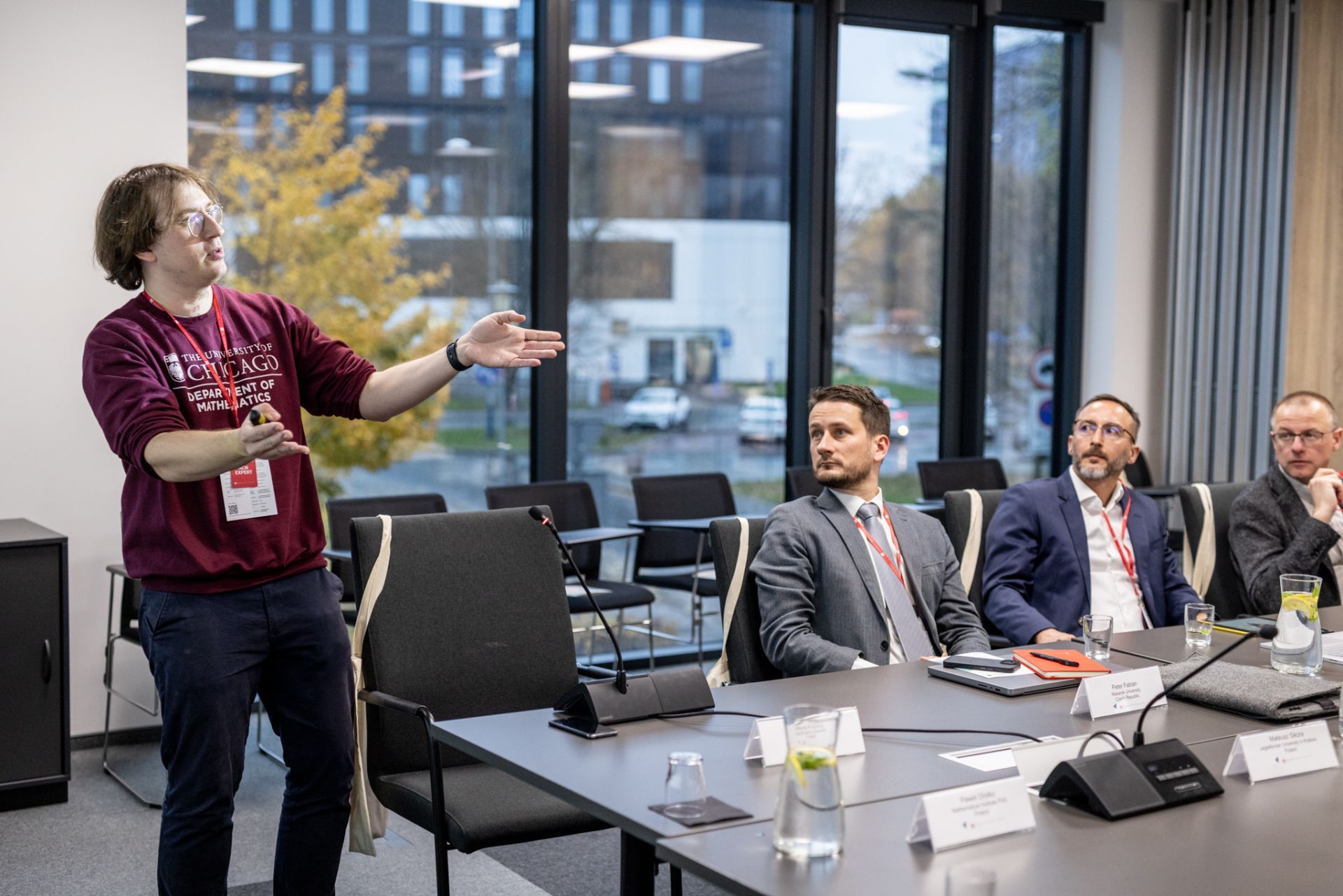 Presentation by Mikołaj Frączyk, Jagiellonian University
The aim of the Dioscuri Symposium was not only to showcase the frontiers of research conducted at the Dioscuri Centres at both PI and early-career levels, but also to address the topic of science communication and to provide targeted training sessions. In a session moderated by Prof. Ulman Lindenberger, the audience heard ten presentations by leaders of the Centres of Scientific Excellence and ten presentations by ECRs, spanning the wide scientific spectrum represented in the Centres - from cell biology and optics to theoretical and applied mathematics. Discussions highlighted the substantial impact of the ongoing research on the development of their respective disciplines, as well as the high-risk, high-gain nature of the projects. Particular attention was drawn to the poster session featuring early-career researchers, who presented their sub-projects and thereby demonstrated the Centres’ broad research scope - further emphasising the autonomy of the Leaders in their supervision and the creation of new leadership in science through the funding of these Centres of Excellence.
Presentation by Mikołaj Frączyk, Jagiellonian University
The aim of the Dioscuri Symposium was not only to showcase the frontiers of research conducted at the Dioscuri Centres at both PI and early-career levels, but also to address the topic of science communication and to provide targeted training sessions. In a session moderated by Prof. Ulman Lindenberger, the audience heard ten presentations by leaders of the Centres of Scientific Excellence and ten presentations by ECRs, spanning the wide scientific spectrum represented in the Centres - from cell biology and optics to theoretical and applied mathematics. Discussions highlighted the substantial impact of the ongoing research on the development of their respective disciplines, as well as the high-risk, high-gain nature of the projects. Particular attention was drawn to the poster session featuring early-career researchers, who presented their sub-projects and thereby demonstrated the Centres’ broad research scope - further emphasising the autonomy of the Leaders in their supervision and the creation of new leadership in science through the funding of these Centres of Excellence.
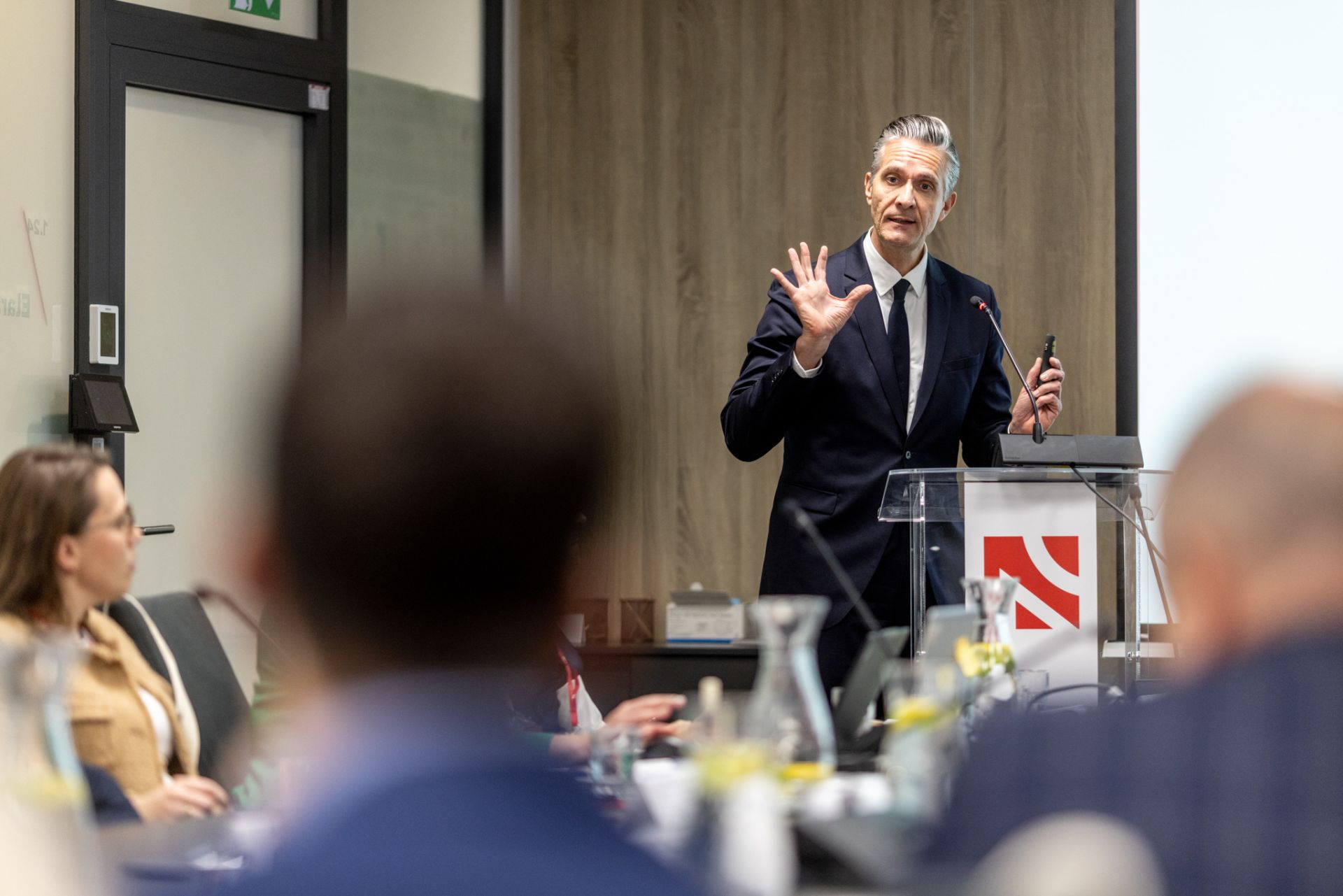 Keynote by Christian Doeller, Max Planck Gesellschaft
Prof. Christian Doeller, Vice President of the Max Planck Society honored the symposium with a keynote speech. He introduced the relevance of science-communication mechanisms not only from the perspective of individual scientists but also from the vantage point of research-performing and research-funding institutions. The keynote highlighted the responsibility of science towards society as a key aspect of science communication. Therefore he advocated for communication channels tailored to specific audiences but also encouraged to proactively seek opportunities for communication. Prof. Doeller illustrated the importance of science communication by showing how scientific work can be framed in relation to current events or societal phenomena.
Keynote by Christian Doeller, Max Planck Gesellschaft
Prof. Christian Doeller, Vice President of the Max Planck Society honored the symposium with a keynote speech. He introduced the relevance of science-communication mechanisms not only from the perspective of individual scientists but also from the vantage point of research-performing and research-funding institutions. The keynote highlighted the responsibility of science towards society as a key aspect of science communication. Therefore he advocated for communication channels tailored to specific audiences but also encouraged to proactively seek opportunities for communication. Prof. Doeller illustrated the importance of science communication by showing how scientific work can be framed in relation to current events or societal phenomena.
His narrative referenced the forthcoming Olympics in Rio de Janeiro: while the scientists’ paper focused on achieving electron-microscopic resolution of the human actomyosin complex, the research news began with Usain Bolt and the question of why he is the fastest person on Earth - explaining that this can be understood by examining the interplay of muscle proteins at such high resolution.
Finally, the keynote addressed the issue of declining public trust in science. He pointed out that the algorithms on social media do not distinguish between serious, fact-based information and misinformation. A study investigated how many climate-change-related videos produced by scientific institutions reach 100,000 views: only two did. By contrast, twenty chemtrail-conspiracy videos reached that threshold. Raising the threshold to one million views removes scientific organisations from the sample entirely - leaving one video by a YouTube influencer and three conspiracy videos. Prof. Doeller clearly stressed the importance of science communication performed by both communication professionals as well as professional scientists to counter this global trend.
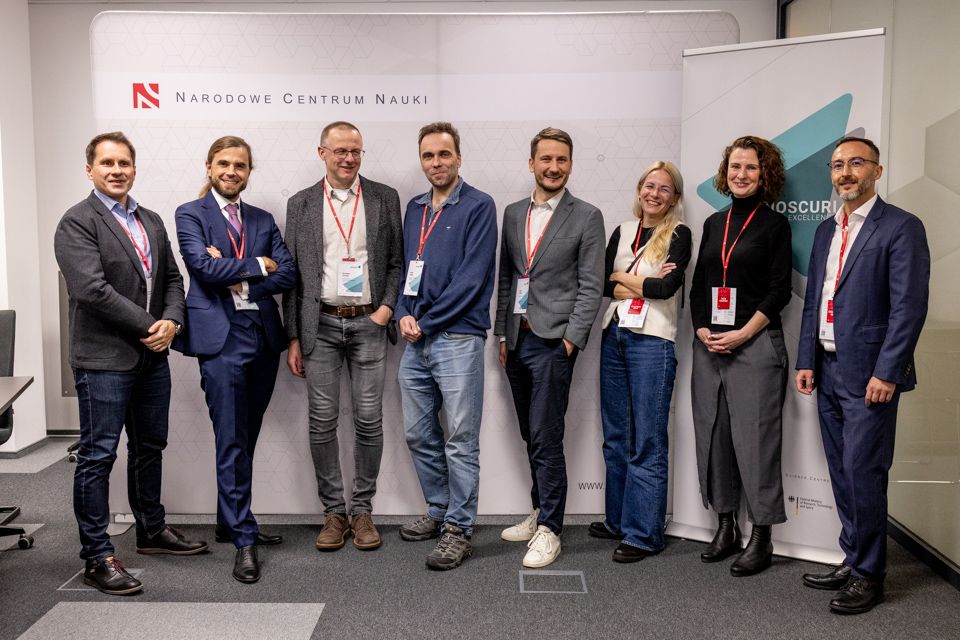 The symposium also provided space for a critical and constructive discussion on the opportunities, challenges and future of the Dioscuri Programme, chaired by Prof. Marta Miączyńska, Head of IIMCB.
The symposium also provided space for a critical and constructive discussion on the opportunities, challenges and future of the Dioscuri Programme, chaired by Prof. Marta Miączyńska, Head of IIMCB.
The National Science Centre opened this discussion by announcing the upcoming fifth call for proposals for two interdisciplinary Dioscuri Centres of Scientific Excellence in Poland. Prof. Krzysztof Jóźwiak, Director of NCN, together with Prof. Christian Doeller, Vice President of the Max Planck Society, invited the scientific community to apply - emphasising the programme’s openness to all scientific disciplines and its focus on research excellence and interdisciplinarity.
The debate further addressed expectations regarding the Dioscuri Programme from the perspectives of the scientific communities in Poland, Germany and the Czech Republic, as well as the programme’s achievements to date, which could form the basis for a future initiative of this kind.
To round up the Symposium Programme a set of training sessions offered opportunities to acquire new skills: a Planck Academy workshop led by communication professional Rhea Wessel, in which Dioscuri Leaders focused on practical aspects of thought leadership and science communication; a training session delivered by NCN Discipline Coordinators for ECRs, who were introduced to NCN funding opportunities and the principles of the evaluation process; and a meeting led by the Dioscuri Programme Coordinators from Germany, Poland and the Czech Republic, during which administrative coordinators discussed current issues related to the day-to-day operation of the Centres and benefited from an international platform for knowledge exchange.
With reference to the NCN Director’s Communique of 9 June 2025 and pursuant to Point 3 (3) (5) of NCN Council Resolution No 64/2023 of 5 July 2023 on the terms of the International Multilateral Partnerships for Resilient Education and Science System in Ukraine (IMPRESS-U) call for research projects carried out as multilateral collaboration under the IMPRESS-U programme pursuant to the Lead Agency Procedure, please note that as funds allocated by one of the partner institutions for research projects under IMPRESS-U have been fully used and the US National Science Foundation (NSF) suspended the call for proposals, the NCN Director decided to end the call for proposals under IMPRESS-U.
We present a preliminary timeline for calls operated by the National Science Centre in the year 2026.
The call timeline does not include multilateral calls launched by the international networks of research funding agencies, including the NCN, which are announced and pre-announced on the NCN website all year round according to the decisions of the participating agencies.
| TYPE OF CALL | CALL ANNOUNCEMENT | CALL DEADLINE | CALL RESULTS |
|---|---|---|---|
| Weave-UNISONO | continous call, in line with partner agencies call timelines | depend on the time of publishing results by partner agencies | |
| continuous call, open from 2 February to 31 July 2025 | November 2025 (last ranking list) | ||
| 16 March | 16 June | December 2026 | |
| 15 June | 15 September |
March 2027 |
|
| 15 September | 15 December |
OPUS 32, SONATA 22 – June 2027 Weave – depends on the time of accepting evaluation results by partner agencies, November 2027 at latest |
|
| 15 December | 15 March 2027 |
September 2027 |
|
The European Research Council has just revealed the winners of its Consolidator Grant 2025. 4 out of 349 winners are former NCN grant winners affiliated with Polish research institutes: Dr hab. Wojciech Czerwiński, Dr hab. Maria Nowak and Dr hab. Michał Pilipczuk from the University of Warsaw, as well as Dr hab. Sławomir Porada from the Wrocław University of Science and Technology. Congratulations!
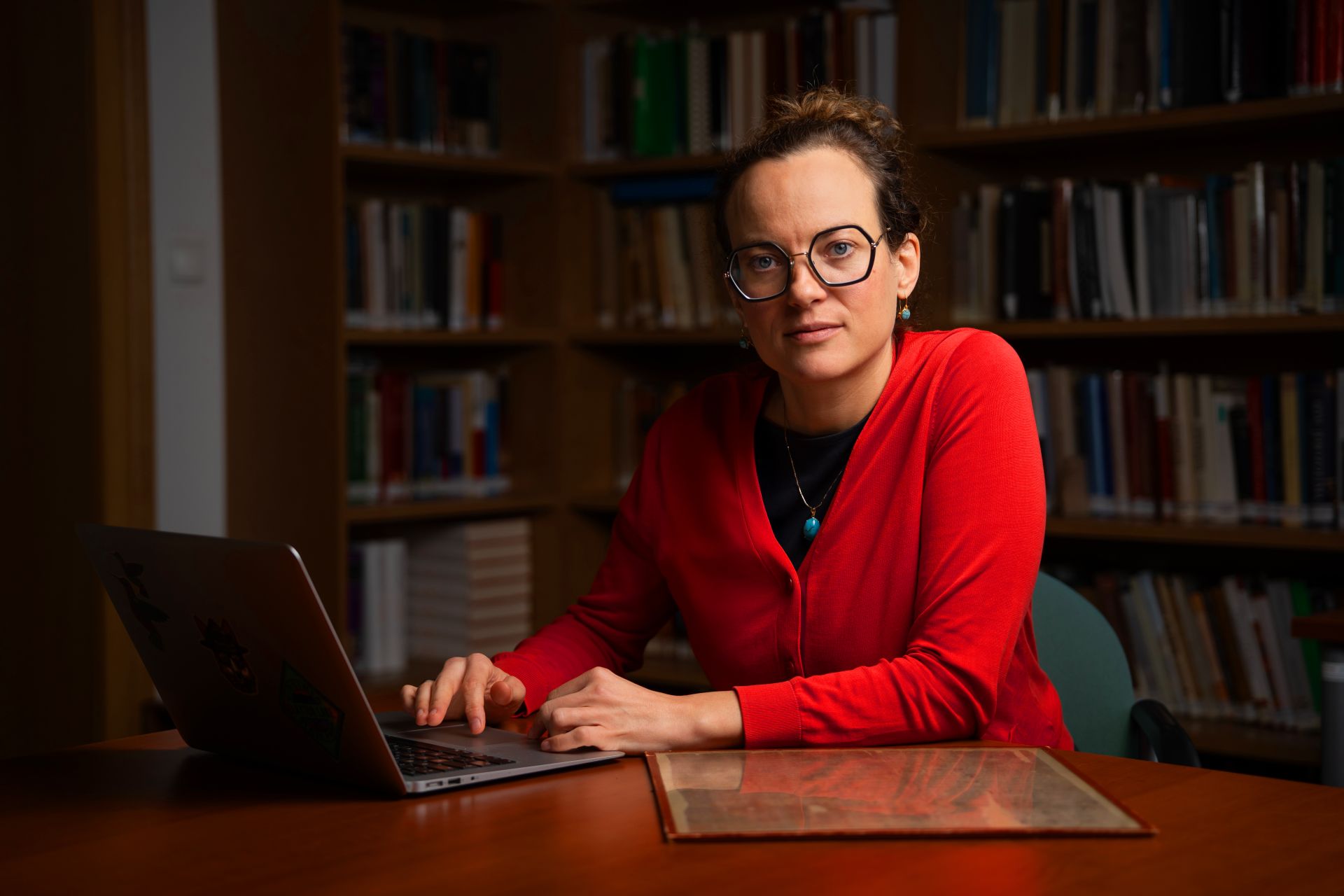 Maria Nowak, photo by Mirosław Kaźmierczak/UW
Dr hab. Maria Nowak works at the Polish Centre of Mediterranean Archaeology, University of Warsaw. Her research focuses on, inter alia, classic Greek papyrology, legal papyrology, legal practice in the Roman Empire, and issues of multi-legal systems in antiquity. She has received ERC funding of EUR 1.9 million for the project “A provincial capital polis at the end of the Roman era. Periphery or a center of power? (PeriPolis)” aimed to present the late Roman Empire as a state struggling with challenges strikingly similar to those faced by modern societies. Dr Nowak will seek to reveal whether crisis is an intrinsic feature of the collapse of empires, or whether the two phenomena may occur independently. She will also try to gain a deeper understanding of everyday life in times of decline – both for ordinary inhabitants and political elites. Maria Nowak is a former winner of NCN’s SONATA 9 and OPUS 18.
Maria Nowak, photo by Mirosław Kaźmierczak/UW
Dr hab. Maria Nowak works at the Polish Centre of Mediterranean Archaeology, University of Warsaw. Her research focuses on, inter alia, classic Greek papyrology, legal papyrology, legal practice in the Roman Empire, and issues of multi-legal systems in antiquity. She has received ERC funding of EUR 1.9 million for the project “A provincial capital polis at the end of the Roman era. Periphery or a center of power? (PeriPolis)” aimed to present the late Roman Empire as a state struggling with challenges strikingly similar to those faced by modern societies. Dr Nowak will seek to reveal whether crisis is an intrinsic feature of the collapse of empires, or whether the two phenomena may occur independently. She will also try to gain a deeper understanding of everyday life in times of decline – both for ordinary inhabitants and political elites. Maria Nowak is a former winner of NCN’s SONATA 9 and OPUS 18.
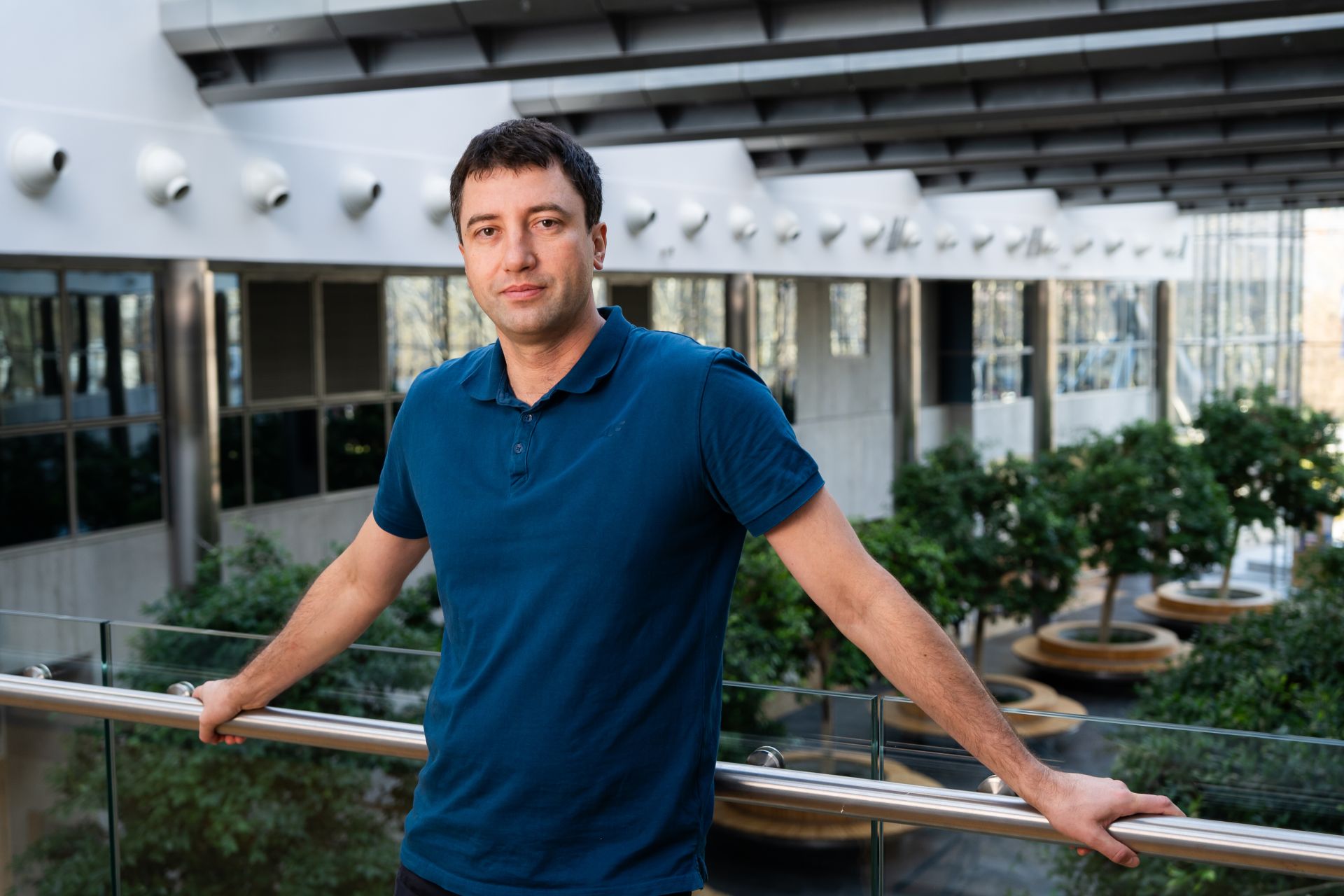 Wojciech Czerwiński, photo by Mirosław Kaźmierczak/UW
ERC Consolidator Grants 2025 will also go to two researchers from the Faculty of Mathematics, Informatics and Mechanics at the University of Warsaw. They will both receive ERC grants for the second time. Dr hab. Wojciech Czerwiński received nearly EUR 2 million for his project “Reachability in Infinite Systems at High Resolution (POLARIS)”. The researcher works on computational models known as state-based systems, and will seek to solve one of the key dilemmas in computer science, namely the limits of achievability in systems with an infinite number of states. The bulk of his project concerns determining whether it is possible to devise an algorithm faster than existing ones that allows a given programme to move from its initial situation to its final one. Wojciech Czerwiński is a former winner of NCN’s SONATA 11.
Wojciech Czerwiński, photo by Mirosław Kaźmierczak/UW
ERC Consolidator Grants 2025 will also go to two researchers from the Faculty of Mathematics, Informatics and Mechanics at the University of Warsaw. They will both receive ERC grants for the second time. Dr hab. Wojciech Czerwiński received nearly EUR 2 million for his project “Reachability in Infinite Systems at High Resolution (POLARIS)”. The researcher works on computational models known as state-based systems, and will seek to solve one of the key dilemmas in computer science, namely the limits of achievability in systems with an infinite number of states. The bulk of his project concerns determining whether it is possible to devise an algorithm faster than existing ones that allows a given programme to move from its initial situation to its final one. Wojciech Czerwiński is a former winner of NCN’s SONATA 11.
 Michał Pilipczuk, photo by Mirosław Kaźmierczak/UW
Dr. hab. Michał Pilipczuk’s research focuses on graphs, which are fundamental mathematical objects used to model all kinds of networks. His project ”Towards a unified structure theory for dense graphs (WYDRA)”, which has been awarded nearly EUR 2 million in funding, will aim to develop a coherent and robust theory describing the structure of dense graphs. The results of his research will pave the way for many new applications – in both combinatorics and algorithm design and will indicate interesting directions for further research at the intersection of graph theory and theoretical computer science. Michał Pilipczuk is a former winner of NCN’s SONATA 6.
Michał Pilipczuk, photo by Mirosław Kaźmierczak/UW
Dr. hab. Michał Pilipczuk’s research focuses on graphs, which are fundamental mathematical objects used to model all kinds of networks. His project ”Towards a unified structure theory for dense graphs (WYDRA)”, which has been awarded nearly EUR 2 million in funding, will aim to develop a coherent and robust theory describing the structure of dense graphs. The results of his research will pave the way for many new applications – in both combinatorics and algorithm design and will indicate interesting directions for further research at the intersection of graph theory and theoretical computer science. Michał Pilipczuk is a former winner of NCN’s SONATA 6.
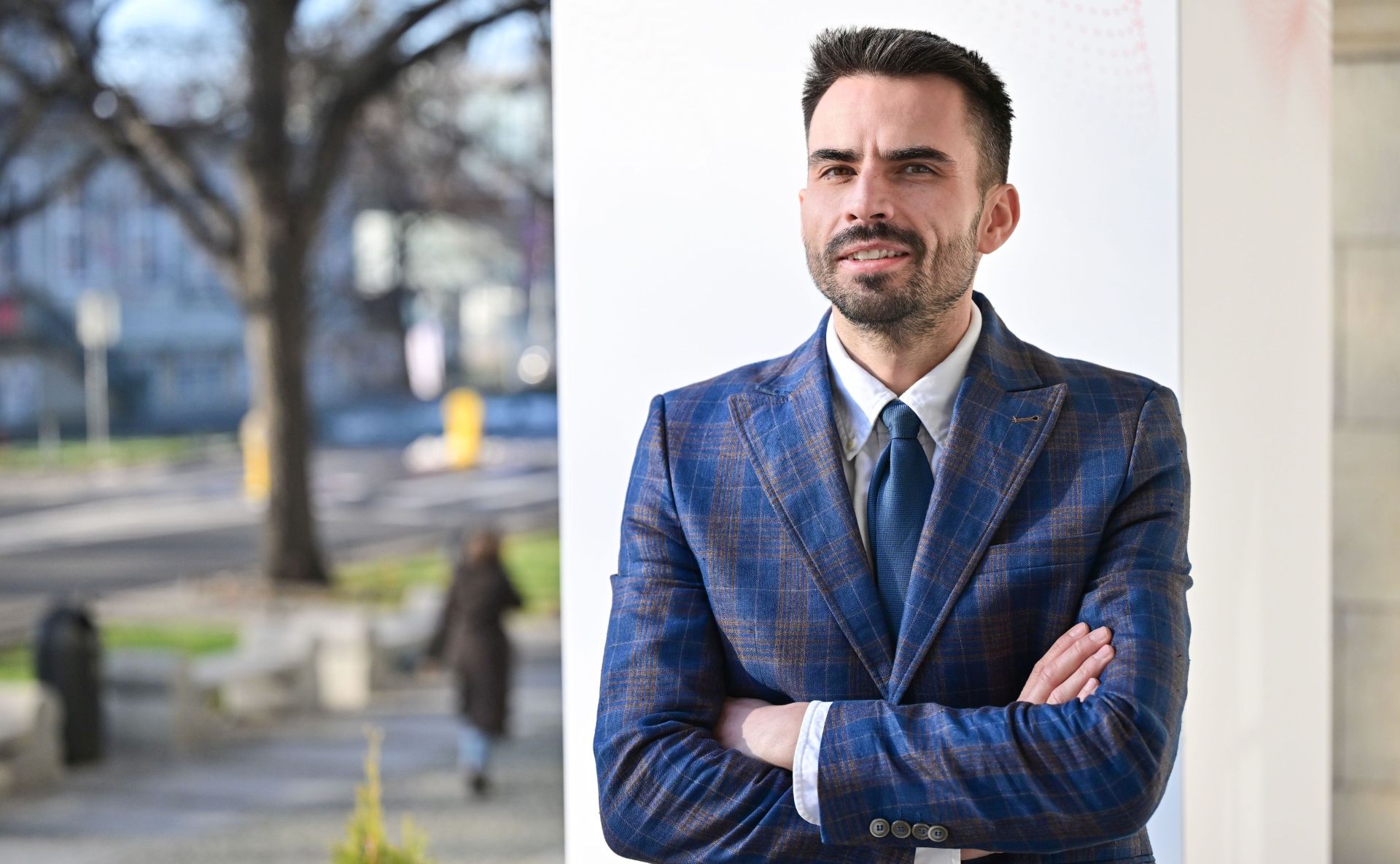 Sławomir Porada, photo by Politechnika Wrocławska
For the first time, a CoG ERC was awarded to a researcher affiliated with a Wrocław University. Dr hab. inż. Sławomir Porada from the Faculty of Chemistry, Wrocław University of Science and Technology. He has received nearly EUR 2 million in funding for his project “Small Differences, Big Impact: Achieving Effective Selective Separations from Water by Tuning Ion Transport Processes”. Dr Porada will seek to better understand ion transport mechanisms for ions with very similar properties - especially how ions are adsorbed and desorbed over time in electrode materials. This will form the basis for developing a new class of separation processes that use not only material properties but also smart control of the process operating time and cycle. Sławomir Porada is a beneficiary of NCN’s research component under the NAWA Polish Returns Programme.
Sławomir Porada, photo by Politechnika Wrocławska
For the first time, a CoG ERC was awarded to a researcher affiliated with a Wrocław University. Dr hab. inż. Sławomir Porada from the Faculty of Chemistry, Wrocław University of Science and Technology. He has received nearly EUR 2 million in funding for his project “Small Differences, Big Impact: Achieving Effective Selective Separations from Water by Tuning Ion Transport Processes”. Dr Porada will seek to better understand ion transport mechanisms for ions with very similar properties - especially how ions are adsorbed and desorbed over time in electrode materials. This will form the basis for developing a new class of separation processes that use not only material properties but also smart control of the process operating time and cycle. Sławomir Porada is a beneficiary of NCN’s research component under the NAWA Polish Returns Programme.
The ERC Consolidator Grant is one of the most prestigious international grant programmes. It is open to researchers who are 7 to 13 years after completing their PhD and can demonstrate outstanding scientific achievements. This time, a total funding of EUR 728 million will go to researchers from 44 countries, including 25 from Europe.
Together with the Copernicus Centre, we are pleased to invite you to an online lecture by Łucja Kowalewska (Membrane Labyrinths in the Nanoworld of Cells: From Geometry to Biological Functions) on 10 December, 6pm, as part of the “Science at the Centre” series.
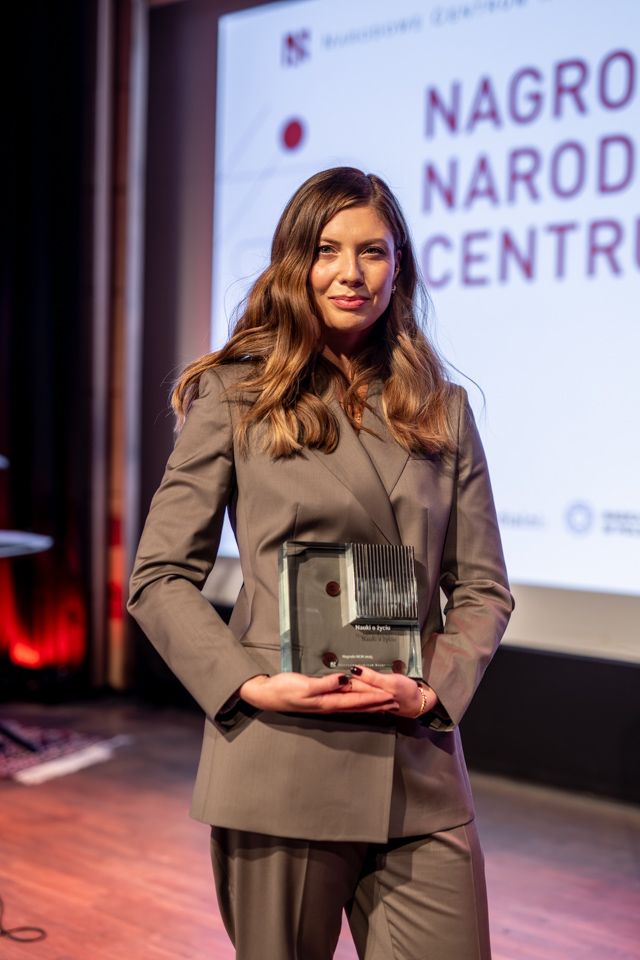 Łucja Kowalewska, photo by Łukasz Bera
Dr hab. Łucja Kowalewska works at the Faculty of Biology, University of Warsaw. Her research focuses on plant cell biology, particularly on the structure and dynamics of plastid membranes. Last October, she was presented with the NCN Award for outstanding scientific achievements.
Łucja Kowalewska, photo by Łukasz Bera
Dr hab. Łucja Kowalewska works at the Faculty of Biology, University of Warsaw. Her research focuses on plant cell biology, particularly on the structure and dynamics of plastid membranes. Last October, she was presented with the NCN Award for outstanding scientific achievements.
Her work focuses on periodic membranes, whose organisation plays a crucial role in cellular functioning – including plastid biogenesis and photosynthetic efficiency. Dr. Kowalewska’s team investigates how membrane structure influences biological function and which molecular and physicochemical mechanisms govern membrane transformations.
Dr Kowalewska’s research makes a significant contribution to understanding the relationship between membrane geometry and function. The researcher has demonstrated that the spatial organisation of membranes is not merely the result of the self-assembly of their structural components, but also actively regulates cellular processes – marking a shift in the existing paradigm of cell biology.
While her studies are primarily fundamental in nature, understanding the principles of biological membrane self-organisation also holds significant application potential. It provides a foundation for the design of biomimetic nanomaterials that may be used in medicine, pharmacy and food technology – for instance, as drug carriers, materials supporting tissue regeneration or smart coatings.
Footage on Dr Kowalewska’s research
An online lecture organized by the Copernicus Center will be streamed on 10 December, at 6 pm.
In November, a lecture by Maciej Stolarski was delivered. On 17 December, a meeting with Bartosz Szyszko will be held. We encourage you to join it!
The first “Science at the Centre” lectures were delivered by the 2020 NCN Award winners. So far, 16 meetings have been held and we truly appreciate the Copernicus Centre’s support and assistance in their organization.
Dates have been released for interviews in the calls launched on 16 June 2025. The results of the first stage of merit-based evaluation under MAESTRO 17 and SONATA BIS 15 will be published in the second half of December.
MAESTRO 17
SONATA BIS 15
Principal investigators will be interviewed in English. Researchers whose proposals will be recommended for the second stage of evaluation will be notified of the interviews 14 days in advance at the latest. Interviews will be held at the premises of the National Science Centre in Krakow and although principal investigators are required to participate in person, in exceptional and well-justified cases interviews may be held via available telecommunication tools. Failure to attend the interview will be regarded as a resignation from applying for funding. The cost of travel to and accommodation in Krakow will not be reimbursed.
Under international SHENG 4 call for Polish and Chinese research projects, funding will be awarded to 21 projects with a value of over PLN 38 million.
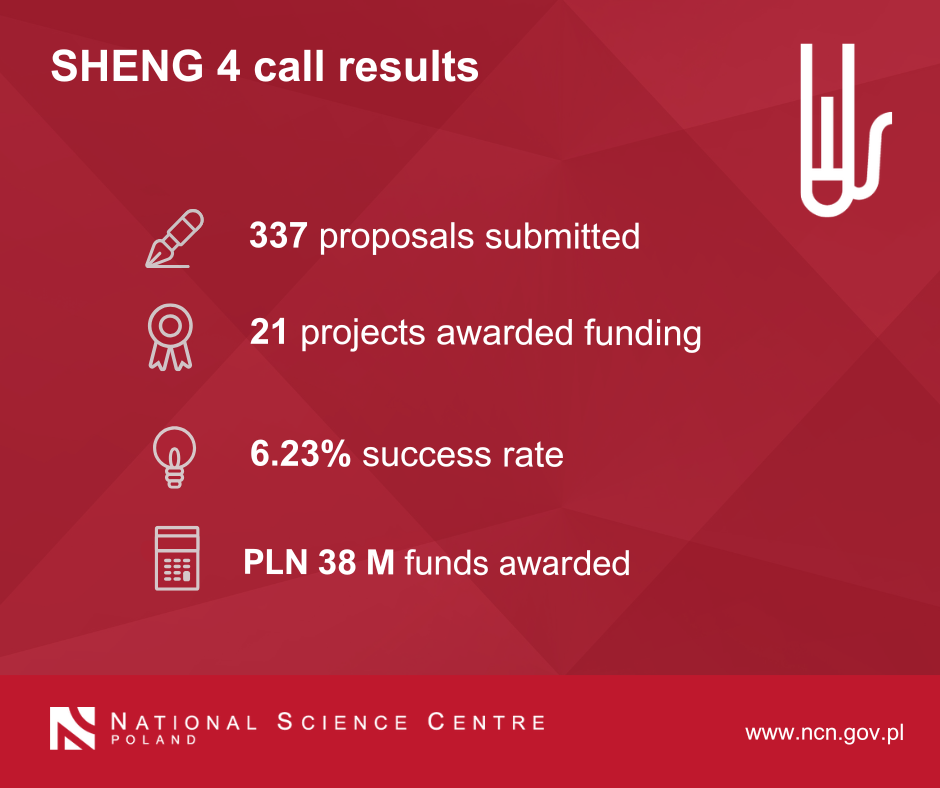 Under SHENG 4 that has just been concluded, researchers could submit proposals to selected disciplines within three research domains. Out of 337 proposals, 229 were submitted to Physical Sciences and Engineering, 103 to Life Sciences, and only 5 to Humanities, Social Sciences and Art Sciences. Nearly PLN 22.5 million was awarded to 13 projects in Physical Sciences and Engineering and nearly PLN 16 million to 8 projects in Life Sciences. The success rate was 6.23%.
Under SHENG 4 that has just been concluded, researchers could submit proposals to selected disciplines within three research domains. Out of 337 proposals, 229 were submitted to Physical Sciences and Engineering, 103 to Life Sciences, and only 5 to Humanities, Social Sciences and Art Sciences. Nearly PLN 22.5 million was awarded to 13 projects in Physical Sciences and Engineering and nearly PLN 16 million to 8 projects in Life Sciences. The success rate was 6.23%.
One of the awarded projects in Life Sciences, titled “Synthesis and Functionalization of Hyperbranched Polypeptides for Osteoarthritis Treatment”, will be headed by Dr hab. Monika Gosecka from the Centre of Molecular and Macromolecular Studies, Polish Academy of Sciences. Osteoarthritis is a disease mainly affecting the elderly that involves pain, stiffness and restricted movement. Currently, treatment usually involves anti-inflammatory drugs or joint replacement, which are known for their side effects and inability to regenerate joint cartilage. In healthy joints, cartilage is well hydrated, which results in an extremely low coefficient of friction, but is degenerated and damaged as the disease progresses. Hyaluronic acid injections, which are widely used today, have limited efficacy and require frequent injections. The aim of the project is to develop new formulations for delivery injections using hyperbranched polypeptides, the structure of which will make them durable and will provide excellent lubrication of the joint, easy application and drug delivery. To this end, a library of polypeptides with different structures will be synthesised and studied, and knowledge gained in this project will show the relationship between the structural features of these molecules and their biological activity, leading to a development of more effective methods in the treatment of osteoarthritis.
One of the projects awarded in Life Science will be carried out by Dr inż. Piotr Niezgoda from the West Pomeranian University of Technology in Szczecin, who will study biodiversity and functionality of arbuscular mycorrhizal (AM) fungi. In the face of continuous population growth and climate change, sustainable agriculture is becoming increasingly important, with its limited use of chemical fertilizers and pesticides that are replaced by microorganisms. Such microorganisms include arbuscular mycorrhizal (AM) fungi, which live in symbiosis with most terrestrial plants. They improve plant productivity and nutrition, and alleviate the effects of stress. Despite their importance for the ecosystems and agricultural potential, little is known of the diversity of AM fungi in the world, their activity, response to climate change and the possibilities of using them in practice. The project “Arbuscular Mycorrhizal Fungal Biodiversity and Functionality” aims to fill the void by comprehensive studies of AM fungal communities in croplands and grasslands located in China and Poland that differ greatly in terms of climate and soil properties. Modern techniques will be used, such as amplicon sequencing, phylogenies, reconstruction, isolation of single spores, and mycorrhizal functional tests, to characterize the structure and function of AM fungal communities, reveal the mechanisms underlying agricultural impacts on AM fungal symbiotic functions, and explore their response to environmental factors. The results will enhance our understanding of AMF ecology and evolution, support biodiversity conservation, facilitate their agricultural application, and contribute to the classification of new species, e.g. under transcontinental AM fungal resource bank. The project continues former joint research that resulted in the description of new AMF species in 2022.
List of Projects Recommended for Funding under SHENG 4
SHENG 4 is the international bilateral Polish-Chinese Funding Initiative organised by the National Science Centre in cooperation with the National Natural Science Foundation of China (NSFC) pursuant to the parallel evaluation procedure, which means that both agencies perform a parallel eligibility check and merit-based evaluation and funding is awarded to projects recommended by both agencies. SHENG 4 was open to basic research proposals submitted to one of the following panes: HS6_01-HS6_08, HS6_14-HS6_15, ST4, ST5, ST8 and ST11, or NZ1-NZ9.
The winning projects will be performed in Poland and China, and each project will be supervised by two principal investigators, one for the Chinese research team and one for the Polish team. The Polish research team may use the awarded funds for research, remuneration of the research team, scholarships for students and PhD students, purchase or manufacturing of research equipment or other cost crucial to the Polish part of the project.
Prof. Krzysztof Jóźwiak, Director of the National Science Centre, has been elected to the Science Europe 2025–2027 Governing Board, which plays a key role in shaping strategic direction of Science Europe, an organisation connecting major European research funding agencies and research institutions.
Science Europe brings together 40 institutions from 30 countries and represents them in dialogue with EU institutions, prepares research policy recommendations, and reinforces international collaboration and research funding standards. The NCN has been a member of Science Europe since 2012, and as such has actively participated in its working groups, advanced research policy consultations and initiatives advancing research development across Europe.
Science Europe 2025–2027 Governing Board Members:
The Governing Board was elected at the General Assembly of Science Europe in Oslo, on 18-20 November. The event was accompanied by the annual High-Level Workshop on the European Research Area, a platform to discuss priorities of the next Framework Programme (FP10) to replace Horizon Europe, science diplomacy, responsible international collaboration, research culture, etc..
